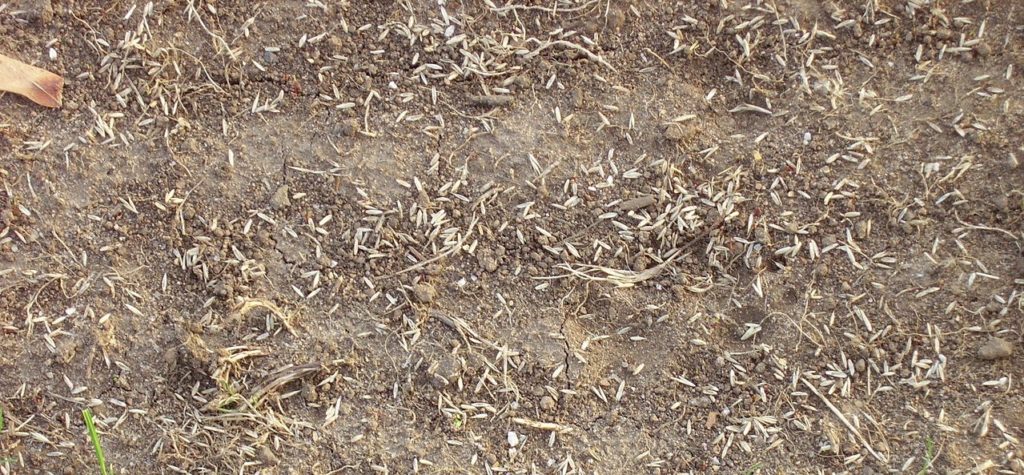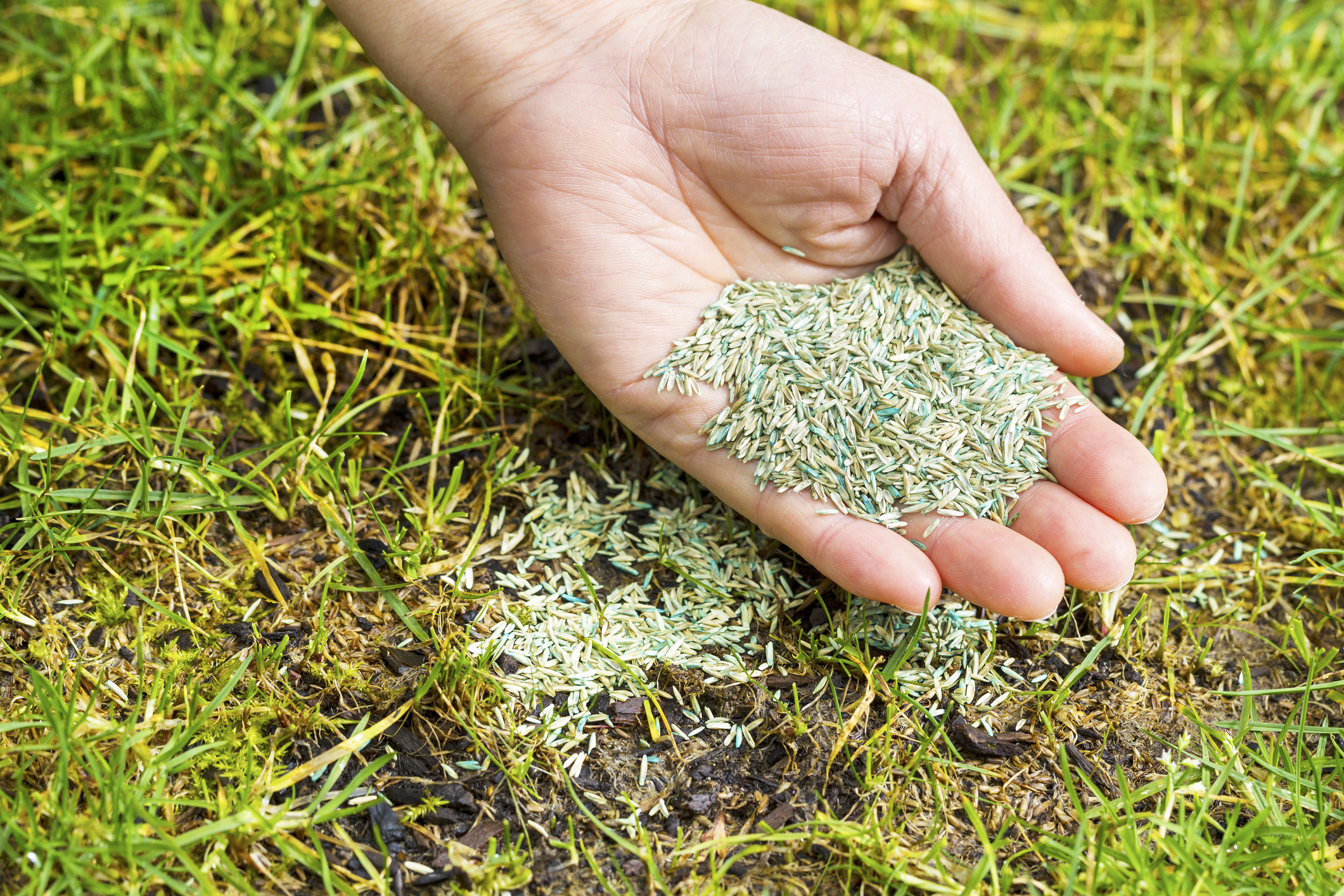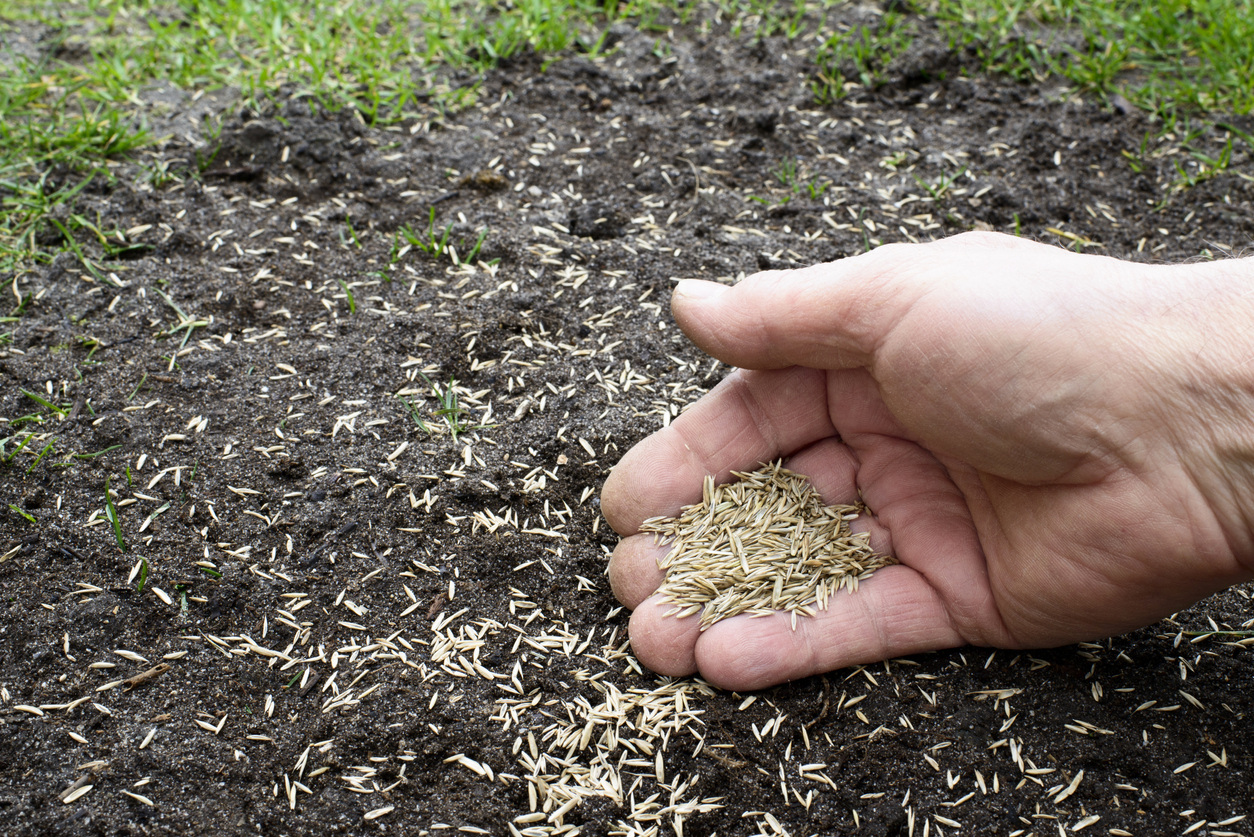How To Successfully Sow Grass Seed

Dont apply a weed preventer liquid or granular or use weed and feed fertilizer when growing grass.
How to successfully sow grass seed. Wheatgrass can be successfully planted with a small grain drill if proper shallow and consistent seeding depth is maintained. Keeping grass seeds and seedlings constantly moist but not soggy is critical to successful grass-seeding efforts. Presspacker wheels contribute to close seedsoil contact.
After your grass seed has sprouted keep the top 2 inches of soil moist but allow it to dry slightly between waterings. Stop watering when puddles begin to appear on the soil surface. There is a set procedure that you will need to follow in order to successfully plant seeds on your dirt.
If you are still unsure and need a bit more help please. Remove debris and rocks from your soil. For sowing a new lawn we recommend sowing the seed at 50g per m2.
Sowing grass seed to make a new lawn allows you to choose a grass seed mixture most appropriate for your needs. Water newly seeded areas two to three times a day with a light spray to keep the seeds moist. There are also lawn seed.
By the time you plant pre-germinated grass seeds all or most of the seed coat has been removed and the seedlings will sprout within a day or two. Pre-germination exposes seeds to a constant level of water to encourage rapid disintegration of the seed coat. For overseeding an existing lawn we recommend sowing at 35g per m2.
This will encourage the grass roots to start growing deep in the soil. Water your seeds as they grow. We have put together some easy to follow guides that cover the main bases.

If you are still unsure and need a bit more help please.
How to successfully sow grass seed. Remove debris and rocks from your soil. Rake the soil and till it making sure to loosen up the soil as much as possible. Water newly seeded areas two to three times a day with a light spray to keep the seeds moist.
There are also lawn seed. Stop watering when puddles begin to appear on the soil surface. Wheatgrass can be successfully planted with a small grain drill if proper shallow and consistent seeding depth is maintained.
You can sow grass seed by hand by simply scattering it or by using a handheld spreader - please contact your manufacturer to calibrate the correct setting that matches the spreading rate of the seed. Water your seeds as they grow. Free flowing grass seed eg.
Depth bands on grass drills are essential for planting depth control. Pre-germination exposes seeds to a constant level of water to encourage rapid disintegration of the seed coat. For overseeding an existing lawn we recommend sowing at 35g per m2.
There is a set procedure that you will need to follow in order to successfully plant seeds on your dirt. Most varieties are simply to nutrient dense and contain lumps. We have put together some easy to follow guides that cover the main bases.
After your grass seed has sprouted keep the top 2 inches of soil moist but allow it to dry slightly between waterings. A garden fork to aerate the soil to ensure your seeds can put down good roots and ensure water reaches deep below. This will encourage the grass roots to start growing deep in the soil.

Sowing grass seed is easy but there are a few key points that will help make all the difference.
How to successfully sow grass seed. Heres what you will need to do. For overseeding an existing lawn we recommend sowing at 35g per m2. Remove debris and rocks from your soil.
Rake the soil and till it making sure to loosen up the soil as much as possible. Stop watering when puddles begin to appear on the soil surface. There are also lawn seed.
If necessary treat any stubborn weeds with a systemic non-residual weed killer. A garden fork to aerate the soil to ensure your seeds can put down good roots and ensure water reaches deep below. Free flowing grass seed eg.
Whether you want a general-purpose lawn a bowling green lawn or a hard-wearing football pitch theres the perfect grass seed mix for you. Water your seeds as they grow. Keeping grass seeds and seedlings constantly moist but not soggy is critical to successful grass-seeding efforts.
Clear the ground of all stones debris and weeds. Pre-germination exposes seeds to a constant level of water to encourage rapid disintegration of the seed coat. After your grass seed has sprouted keep the top 2 inches of soil moist but allow it to dry slightly between waterings.
Wheatgrass can be successfully planted with a small grain drill if proper shallow and consistent seeding depth is maintained. A rake is a great tool to loosen the top layer of soil and remove any dead grass. Sowing grass seed to make a new lawn allows you to choose a grass seed mixture most appropriate for your needs.








